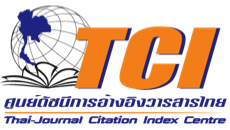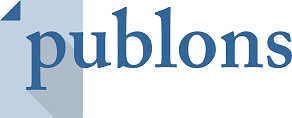A STRUCTURAL EQUATION MODEL OF ORGANIZATIONAL PERFORMANCE OF AIRPORTS OF THAILAND PUBLIC COMPANY LIMITED
DOI:
https://doi.org/10.14456/apsr.2023.8Keywords:
Organizational Performance, Dynamic Capability, Airports of ThailandAbstract
The objectives of this research were 1) to study the level of organizational culture, organizational learning, transformational leadership, dynamic capability, human resource management practices, and organizational performance; and 2) to study the influence of organizational culture, organizational learning, transformational leadership, dynamic capability, and human resource management practices on organizational performance. This research used the quantitative research method. The sample group was staff working at the Airports of Thailand: Suvarnabhumi International Airport, Don Mueang International Airport, Phuket International Airport, Chiang Mai International Airport, Hat Yai International Airport and Mae Fah Luang Chiang Rai International Airport for a total of 440 persons stratified random sampling was employed in this study. The data were collected with questionnaires and analyzed with descriptive statistic and structural equation modeling. The results revealed that 1) organizational culture, organizational learning, transformational leadership, dynamic capability, human resource management practices, and organizational performance were rated at high level; and 2) organizational culture, organizational learning, and dynamic capability have a direct influence on organizational performance, while transformational leadership and human resource management practices have on indirect influence on organizational performance. The results of this research executives of Airports of Thailand Public Company Limited, as well as other organizations can apply the results of this research: to be used as a guideline for improving the performance of the organization both in terms of policy and operation in all airports responsible and to plan the operation for efficiency and further performance.
Downloads
References
Air Transport Action Group. (2005). The economic & social benefits of air transport. Retrieved from www.icao.int/meetings/wrdss2011/documents/jointworkshop2005/atag_socialbenefitsairtransport.pdf.
Airports of Thailand Public Company Limited. (2014). Annual Report 2014. Retrieved from https://investor.airportthai.co.th/misc/AR/20150122-aot-ar2014-en.pdf.
Airports of Thailand. (2022). Fulfilling Quality of Life. Retrieved from https://corporate.airportthai.co.th/en/hr/.
Avolio, B., Zhu, W., Koh, W., & Bhatia, P. (2004). Transformational leadership and organizational commitment: mediating role of psychological empowerment and moderating role of structural distance. Journal of Organizational Behavior, 25, 951-968.
Best, J., & Kahn, J. (1993). Research in education. Boston: Allyn & Bacon.
Busari, A., Khan, S., Abdullah, S., & Mughal, Y. (2020). Transformational leadership style, followership, and factors of employees’ reactions towards organizational change. Journal of Asia Business Studies, 14(2), 181-209.
Chahal, H., Jyoti, J., & Rani, A. (2016). The Effect of Perceived High-performance Human Resource Practices on Business Performance: Role of Organizational Learning. Journal of Global Business Review, 17(3suppl), 107S-132S.
Chen, G. (2005). Management practices and tools for enhancing organizational learning capability. SAM Advanced Management Journal, 70(1), 4-35.
Diamantopoulos, A., & Siguaw, J. (2000). Introducing LISREL: A Guide for the Uninitiated. London: Sage Publications.
Dwyer, S., Richard, O., & Chadwick, K. (2003). Gender diversity in management and firm performance: The influence of growth orientation and organizational culture. Journal of Business Research, 56(12), 1009-1019.
Gomes, G., & Wojahn, R. (2017). Organizational learning capability, innovation, and performance: study in small and medium-sized enterprises (SMES). Revista de Administracao, 52(2), 163-175.
Inthavong, P., Rehman, K., Masood, K., Shaukat, Z., Hnydiuk-Stefan, A., & Ray, S. (2023). Impact of organizational learning on sustainable firm performance: Intervening effect of organizational networking and innovation. Heliyon, 9(5), e16177.
Jantunen, A., Tarkiainen, A., Chari, S., & Oghazi, P. (2018). Dynamic capabilities, operational changes, and performance outcomes in the media industry. Journal of Business Research, 89, 251-257.
Jashari, A., & Kutllovci, E. (2020). The impact of human resource management practices on organizational performance case study: Manufacturing enterprises in Kosovo. Business Theory and Practice, 21(1), 222-229.
Kokkaew, N., Jokkaw, N., Peansupap, V., & Wipulanusat, W. (2022). Impacts of human resource management and knowledge management on non-financial organizational performance: Evidence of Thai infrastructure construction firms. Ain Shams Engineering Journal, 13(6), 101750.
Lin, Y., & Wu, L. (2014). Exploring the role of dynamic capabilities in firm performance under the resource-based view framework. Journal of Business Research, 67(3), 407-413.
Lund, D. (2003). Organizational culture and job satisfaction. Journal of Business & Industrial Marketing, 18(3), 219-236.
Marie, A., Ibrahim, M., & Al-Nasser, A. (2014). Effects of financial and non-financial performance measures on customers’ perceptions of service quality at Islamic banks in UAE. International Journal of Economics and Finance, 6(10), 201-214.
Martin, E., & Terblanche, F. (2003). Building organizational culture that stimulates creativity and innovation. European Journal of Innovation Management, 6(1), 64-74.
Olve, N., Roy, J., & Wetter, M. (2001). Performance Drivers: A Practical Guide to Using the Balanced Scorecard. New Jersey: John Wiley & Sons, Inc.
Osemeke, M. (2012). The Impact of Human Resource Management Practices on Organizational Performance: A Study of Guinness Nigeria Plc. AFRREV IJAH: An International Journal of Arts and Humanities, 1(1), 79-94.
Ozanne, L., Chowdhury, M., Prayag, G., & Mollenkopf, D. (2022). SMEs navigating COVID-19: The influence of social capital and dynamic capabilities on organizational resilience. Industrial Marketing Management, 104, 116-135.
Pasovska, S., & Miceski, T. (2018). The impact of transformational leadership in improvement of the organizational capability. International Journal for Innovation Education and Research, 6(2), 235-246.
Pedraza-Rodriguez, J., Ruiz-Velez, A., Sanchez-Rodriguez, M., & Fernández-Esquinas, M. (2023). Management skills and organizational culture as sources of innovation for firms in peripheral regions. Technological Forecasting and Social Change, 191, 122518.
Sangperm, N., & Chienwattanasook, K. (2019). Roles of Transformational Leadership That Encourage Employees to Have the Innovation Work Behavior. Asian Administration and Management Review, 2(1), 33-41.
Schumacker, R., & Lomax, R. (2010). A beginner’s guide to structural equation modeling. 3rd ed. New Jersey: Lawrence Erlbaum Associates.
Simon, A., Bartle, C., Stockport, G., Smith, B., Klobas, J., & Sohal, A. (2015). Business leaders’ views on the importance of strategic and dynamic capabilities for successful financial and non-financial business performance. International Journal of Productivity and Performance Management, 64(7), 908-931.
Teece, D. (2016). Dynamic capabilities and entrepreneurial management in large organizations: toward a theory of the (entrepreneurial) firm. European Economic Review, 86, 202-216.
Verma, P., & Rao, M. (2016). Organizational performance as a function of creativity components and innovation capability: an Indian perspective. International Journal of Business Performance Management, 17(1), 44-64.
Wamalwa, L. (2023). Transactional and transformational leadership styles, sensing, seizing, and configuration dynamic capabilities in Kenyan firms. Journal of African Business, 24(3), 444-466.
Yilmaz, C., & Ergun, E. (2008). Organizational culture and firm effectiveness: An examination of relative effects of culture traits and the balanced culture hypothesis in an emerging economy. Journal of World Business, 43(3), 290-306.
Zhou, Y., Yuen, K., Tan, B., & Thai, V. (2021). The effect of maritime knowledge clusters on maritime firms’ performance: An organizational learning perspective. Marine Policy, 128(5), 104472.

Downloads
Published
How to Cite
Issue
Section
License
Copyright (c) 2023 Authors

This work is licensed under a Creative Commons Attribution-NonCommercial-NoDerivatives 4.0 International License.











.png)


